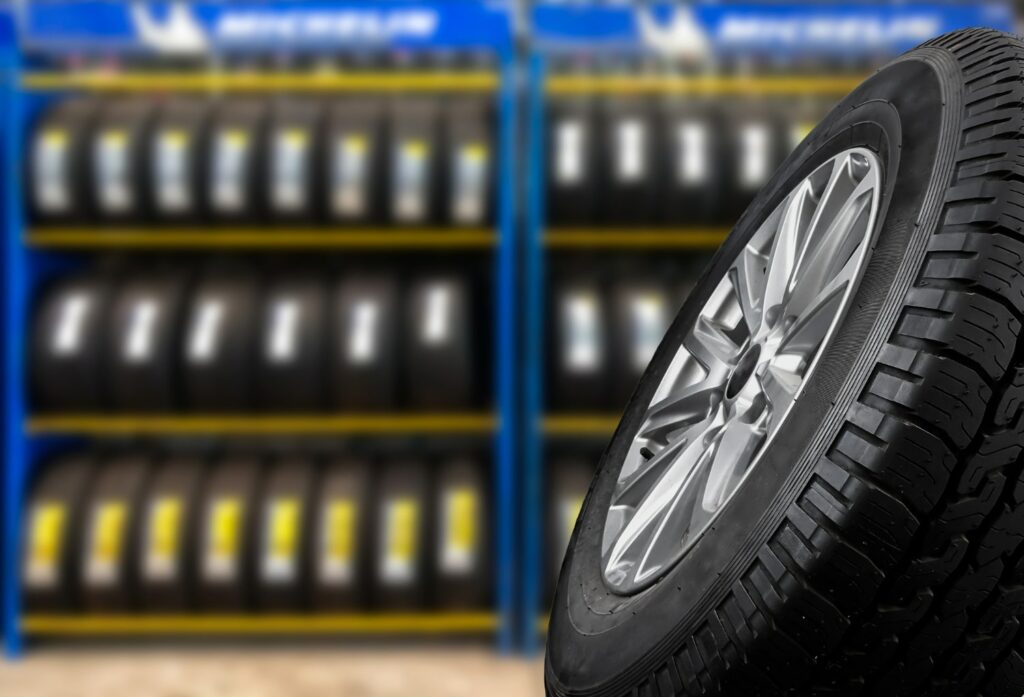The Value Of Training Automotive Part Managers8 min read

Automotive Part Manager Training
Effective training is what sets dealerships apart from the competition, and training parts managers can be a valuable investment. That’s especially true as experienced employees leave the workforce, taking valuable knowledge and experience with them.
As the automotive industry continues to evolve, it becomes increasingly essential for dealerships to invest in training their parts managers. Highly trained automotive parts managers are critical to a dealership’s success, and e-commerce sites are making their jobs more difficult. Advanced e-commerce sites are helping fill the knowledge gap for consumers by supplying information electronically and facilitating purchases and delivery of the right parts at the best price.
E-commerce parts suppliers can do a lot more, using their repositories of information and advanced analytics tools to see details of previous purchases, predict part needs and establish effective ordering parameters. They have an industry-wide view of parts usage to help compare quality, service life, and costs among manufacturers.
Across the automotive industry, there’s no question that ongoing training is critical. Dealerships routinely train sales staff on product knowledge to ensure they are up-to-date on the latest products and technologies, understand how to serve customers better, and close more sales. Service managers learn up-to-date service skills to drive up shop productivity, keep labor and parts costs in check, and hold downtime to a minimum.
The value of training parts managers may be just as vital—but perhaps overlooked. Parts managers play a critical role in dealerships. Not only do they keep track of inventory and ensure that the service and sales department has the parts it needs to keep running, but they also help keep operating costs down. In order to be effective, however, parts managers need to be well-trained.
Investing in the training of your parts managers can significantly impact your shop’s overall efficiency. You can help keep your dealership running smoothly and avoid costly downtime by ensuring your parts managers are knowledgeable and up-to-date on best inventory practices.
Training the people you’ve tasked with running your parts department and inventory control is more important and valuable than ever. Knowledgeable parts managers can adapt effectively to challenges and take advantage of opportunities that benefit your business’s long-term success.
The dealership’s parts and service departments are increasingly facing the danger of becoming a thing of the past. With the advent of e-commerce, parts suppliers can offer a broader range of parts than ever before at lower prices. Consumers can have the aftermarket parts shipped directly to their neighborhood garage. Big Box e-commerce stores make it difficult for dealerships to compete and can lead to the closure of their business.
If a parts manager is not well-trained, they may not be able to identify how to calculate the best stocking level (BSL) and best reorder point (BRP) for automotive parts. It can also lead to significant delays in getting the necessary parts to the service or sales department, which can negatively impact the dealership’s bottom line.
In order to stay competitive, dealerships need to be sure that their parts managers are well-trained, stay up-to-date on inventory management practices, and have a thorough understanding of aging inventory. They also need to be sure that they are ordering parts at the right time from the manufacturer or reputable suppliers who can offer them a broad selection of high-quality parts at a competitive price.
What does an automotive parts manager do each week, month, and year?
An automotive parts manager is responsible for a variety of tasks that keep the dealership’s parts department running smoothly. Parts managers do a lot more than keep track of inventory levels and make sure that the service and sales departments have the parts they need to keep customers’ vehicles running. Their daily tasks can vary from reviewing the lost sales logs and deleted parts from job lines to managing inbound and outbound shipments.
Monthly, they must review their department’s budget and identify areas where costs can be reduced. And annually, they should attend training workshops to stay up-to-date on best practices for inventory management.
By ensuring that the dealership’s parts department is well-run, automotive parts managers play a vital role in the success of the business. By investing in their training, dealerships can ensure that their parts managers are knowledgeable and prepared to meet the challenges of the ever-changing automotive industry.

Parts manager’s workflow checklist
Not sure if you are forgetting essential parts tasks? Parts managers can use our jobs checklist to help them become more efficient in their day-to-day duties and improve their workflow. The checklist includes things like managing inbound and outbound shipments, overseeing special orders, and keeping track of lost sales. Managers should also review inventory costs vs. non-OEM replacement costs, phase-in / phase-out procedures, and staff payroll. Additionally, the checklist includes monthly and quarterly tasks like observing part obsolescence, conducting a physical inventory, and reviewing contract renewals. Finally, parts managers should use the annual checklist to prepare for the next year by looking at no quantity history and updating their forecast. This extensive checklist will help any parts manager become more efficient and successful in their role.
Each item on the checklist should be reviewed by parts managers, and if necessary, additional tasks relevant to their job description should be added. Take the automotive parts manager course for a comprehensive explanation of every job duty.
Daily parts manager checklist review
- Manage inbound and outbound shipments
- Unclaimed special-order parts
- Lost sales log
- Deleted parts from service job-lines
- Price overrides
- Dirty cores
- Core credits
- Manufacturer portal
- Bin locations
- Perpetual inventory count
- Place new orders
- Code manufacturer and supplier invoices
- Inspect parts delivery truck for damage
Weekly parts manager checklist review
- Open parts invoice
- Inventory parts cost vs. non-OEM replacement cost
- Phase-in / phase-out
- Lost sales report
- Back-ordered parts
- Wholesale returns
- Print weekly perpetual inventory count sheets
- Parts accessory display
- Marketing plans
- Outstanding supplier credits
- Staff payroll
- Staff meeting
- Parts employee schedule
Monthly parts manager checklist review
- Obsolescence report
- Negative on-hand report
- Cost greater than retail report
- Zero cost report
- Profit margins
- Out-of-stock report
- Lost sales report
- No bin report
- Parts customer A/R reports
- Back-order reports
- Open purchase order review
- Stock on hand report
- Inventory reclassification
- Review seasonal inventory
- Update merchandising and accessory displays
- Promotional pricing
- Change parts invoice message
- Review contract renewals
- Upcoming seasonal sales
- Upcoming seasonal preparedness (snow crew, salt, tire storage)
- Review contract renewals
- Year-over-year performance vs. forecast
Quarterly parts manager checklist review
- Velocity pricing
- Special pricing
- Rounding pricing
- Matrix pricing
- Manufacturer return indicator
- Conduct staff evaluations
- Attend health and safety meetings
Annual parts manager checklist review
- No quantity history
- Annual physical inventory
- Prepare next year’s forecast
Which key performance indicators (KPI) does a parts manager need to review monthly?
There are a number of key performance indicators (KPIs) that dealerships should track to measure the success of their parts department. Some of the most important KPIs include:
- Parts inventory turnover – gross and true turnover
- Non-stock order parts tracking
- Parts stock order performance
- Parts gross profit percentage
- Percentage of inventory that is obsolete
- Parts to service CP labor ratio
- Safety stock calculations
- Parts phase in and phase out
By tracking these KPIs, dealerships can get a clear picture of how well their parts department is performing. This information can then be used to make necessary changes and improvements to help boost sales and profits.
In order to be successful, dealerships need to have a well-organized and well-managed parts inventory. The best way to achieve this is by establishing a process for controlling and forecasting their parts inventory. The steps outlined above will help dealerships stay in control of their parts inventory and ensure that they have the parts they need when they need them.
Dealerships that invest in the training of their parts managers will be better able to stay competitive and avoid the danger of obsolete auto parts. By ensuring your parts managers are knowledgeable and up-to-date with current trends and have the confidence to keep the parts department running smoothly and efficiently.
Parts managers are essential to the success of any dealership, and it’s important that they are well-trained and up-to-date on best inventory practices. In order to help dealerships stay competitive, we offer an online parts manager course that can train your parts managers in the latest inventory management techniques. Enroll today and give your business a leg up on the competition!
Online Automotive Parts Manager Training Course
Parts managers play a critical role in overseeing the inventory of parts and supplies and working with suppliers to get the best prices. Additionally, parts managers must be able to efficiently manage the workflow of their department’s workflow and work with other departments within the dealership. In order to be successful in this important role, it is critical that managers have the proper training.
The online Automotive Parts Manager Course offered by Service Drive Automotive Training will provide you with all the information you need to be successful in this role.
- Step-by-step guide on inventory control & parts forecasting
- Maximize parts inventory turns & reduce obsolescence
- Controlling & troubleshooting obsolescence
- Comprehensive financial metrics & profitability lessons
- How to apply matrix, velocity, & gross profit margin correctly
- Easy to follow automotive parts manager workflow guide
- Annual parts sales & expense forecasting spreadsheet
- Measure monthly parts performance spreadsheet
- KPI formulas to measure your monthly performance
- Earn a parts manager certificate of achievement in just 10 hours
Do you want to learn how to become an automotive parts manager?
If you would like to learn more about managing a parts inventory, please check out our online Automotive Parts Manager Training Course. This course will teach you everything you need to know about managing a parts inventory, including how to establish a process for controlling and forecasting your inventory. The Automotive Parts Manager Course contains 10 downloadable resources, including KPI calculations, parts pricing formulas, BSL and BRP calculations, and annual parts department forecasting spreadsheets.







